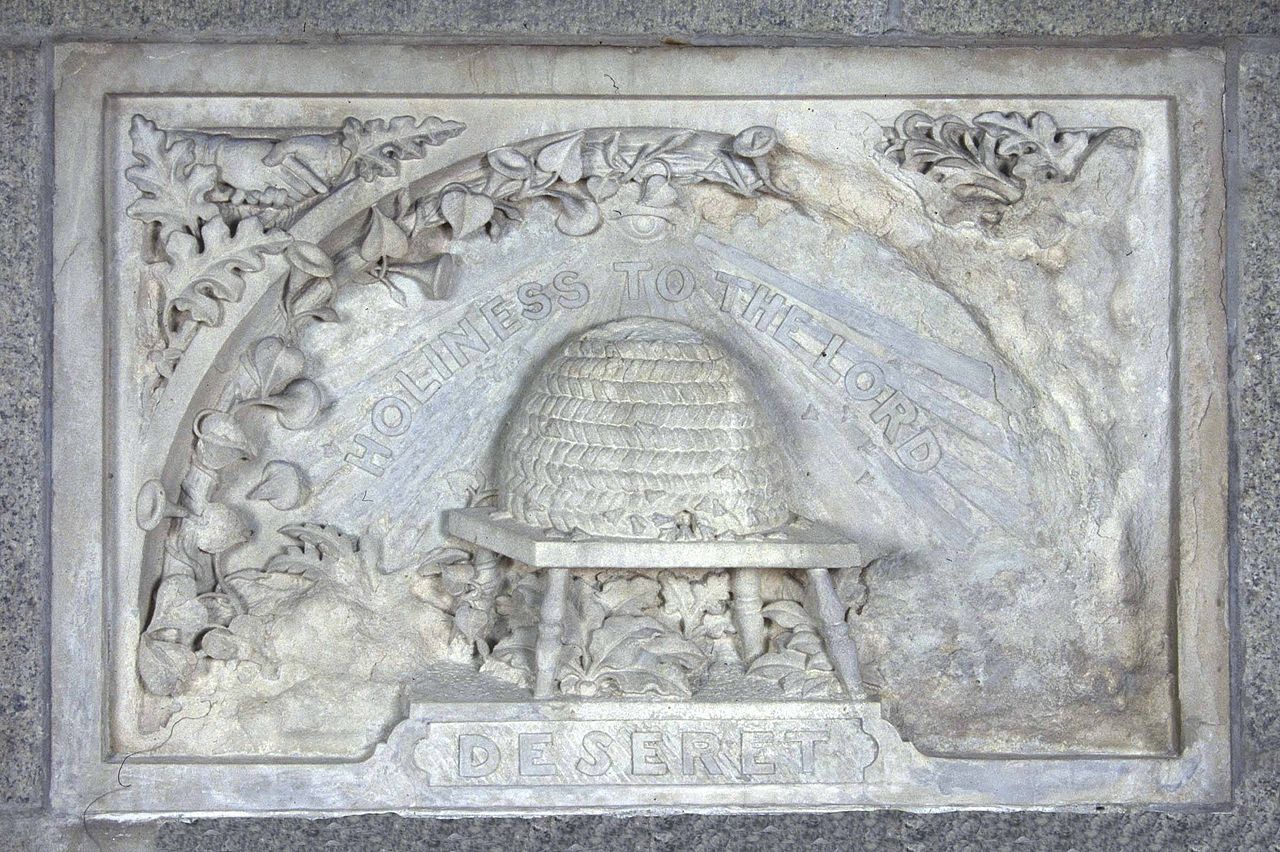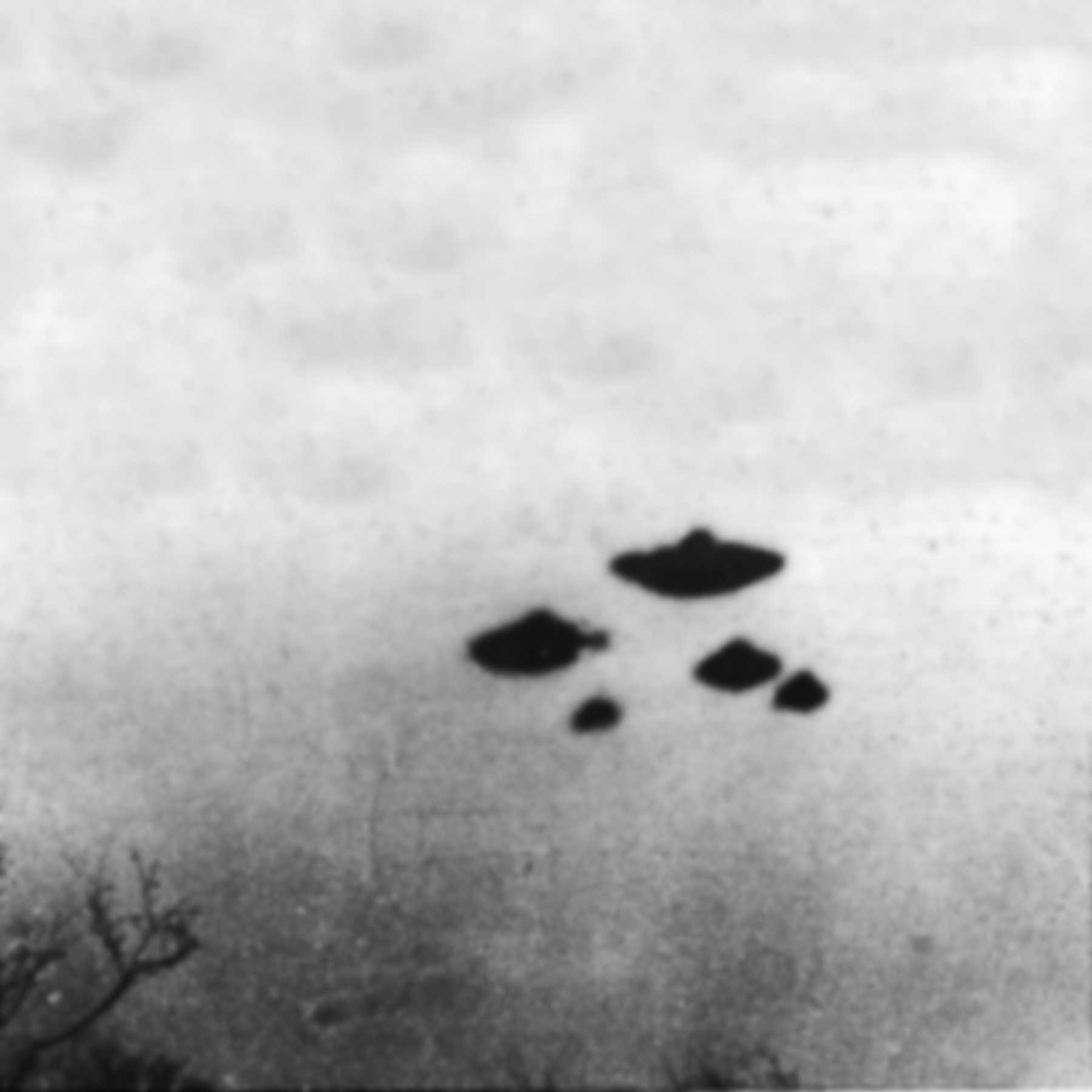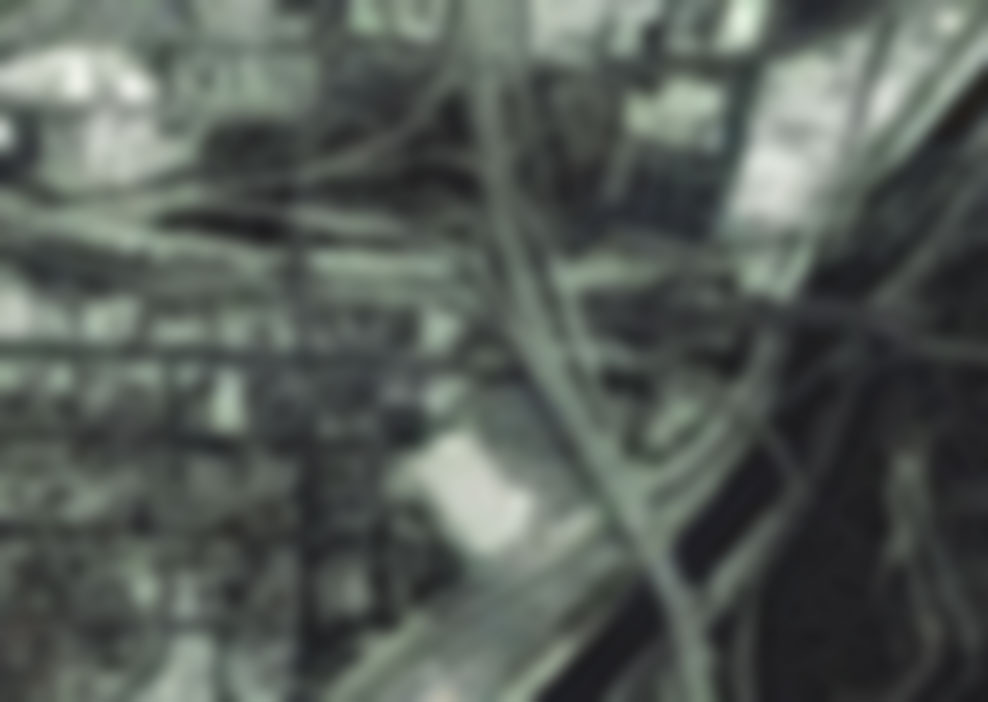The source for the name “Deseret” is a single passage in the Book of Mormon:
“And they did also carry with them deseret, which, by interpretation, is a honey bee, and thus they did carry with them swarms of bees” (Ether 2:3)
This was a pretty key part of Mormon scriptural history, and Brigham Young loved the association of bees with industriousness and cooperation — his personal residence is called the Beehive House — so “deseret” became the official symbol of the State of Utah.
Utah itself is a scaled down version of what the Latter-Day Saints first proposed — a massive state named “Deseret” stretching from Salt Lake City to San Diego.
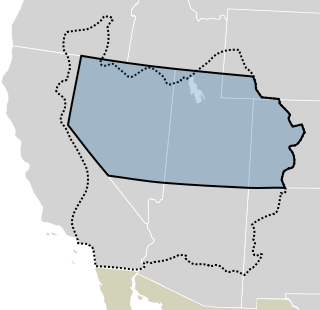
They provisionally established the state of Deseret in 1849, hastily drawing up a constitution and petitioning for statehood, but Congress wasn’t particularly interested in a theocratic demi-nation spanning most of the West. The eventual name of the smaller Utah territory and much smaller state of Utah came from the name of the Ute tribe, meaning “people of the mountains.”
The term deseret remains ubiquitous in Utah and Mormon culture — bees, beehives, so quaint and old timey, like those industrious pioneers of yore! But the original reference is much stranger than a made-up word for bees.
In the Book of Mormon, The Book of Ether describes a group of people, led by “Jared,” sealing themselves up into eight coffin-like boxes which transport them from the Middle-East across the Atlantic Ocean.
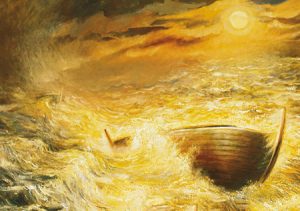
These “Jaredite barges” were built per God’s design to be air-tight. So Jared complained to the Lord: “we shall perish, for in them we cannot breathe” (Ether 2:19) Which God had to admit was a pretty good point. So the Lord told Jared to punch holes in the top and the bottom of the boats he just built, cork up the holes, and when they needed to breathe, to uncork the hole on top. But God also reminded him to make sure to cork the hole back up lest the boat fill up with water.
It’s a bit unclear what the hole in the bottom was for. It could have been in case the barges were constantly flipping upside-down? Perhaps it was a “self-destruct” mechanism of some kind? Theologians disagree.
After punching air-holes in their hulls, Jared complained yet further unto to the Lord that there was no light in these boat-coffins. “O Lord, wilt thou suffer that we shall cross this great water in darkness?” whined Jared. (Ether 2:22)
According to holy scripture, this complaint totally baffled God. “I mean, you can’t have windows,” said the Lord, “cause, like, how would that even work?” “And you can’t have fire,” said the Lord, “cause you don’t have any windows, duh.” So the Lord God just kinda shrugged, as if to say: whatta ya gunna do? (Ether 2:23-25)
But “brother of Jared” (that’s actually what he’s called) came up with a plan. He climbs Mount Shelem, “moltens” himself sixteen white rocks, and then very obsequiously asks the Lord if he could please make these rocks glow. (Ether 3:1-5)
And lo, the Lord God — who turns out to be Jesus himself — said “alrighty!” and did reach out with His disembodied human finger to poke light into each of the rocks.
This is just scriptural truth here. The Jesus Finger casting the level 3 cleric spell continual flame on some rocks at the request of “brother of Jared” is a hella big moment in Latter-Day Saints theology. (Ether 3:6-28)

While the incident is sort of a “Moses seeing God” moment, the narrative upshot was that while the Jaredites were sealed in barge-boxes sloshing around in their own filth, they would at least have a faint glimmer of cold light so they could stare at each other.
With that sorted, they got under way.
It took them a full year to cross the oceans without sails or rudders, finally arriving (depending on the school of Mormon geography you ascribe) either up the Mississippi to somewhere around Missouri, or roughly in present-day Guatemala. This is a matter of some active debate, though the Central American “limited geography model” seems more established.
There is, of course, no empirical evidence for any of this. And God being flummoxed by windows also puts a strain on theological coherence. But mythopoesis being what it is, all that isn’t really the crazy part.
The crazy part is that in the Book of Ether, there’s a very short list of things included in this year-long crossing of the globe sealed inside their air-tight barges:
- glow rocks (obviously)
- seeds (good)
- birds (well, okay)
- fish (uhhh)
- and . . . swarms of bees!!
Putting it all together, it’s quite a nightmare image. Sealed in a coffin flipping around wildly on the waves, lit only by the cold glow of two small rocks, occasionally yanking a cork free for a few gasps of air, while containers of fish slosh in the bilge and birds scream in the shadows.
And through it all — bees. Bees everywhere.
Everyone and everything covered in bees.
For a year.
And that is where the emblem of the modern state of Utah comes from.
